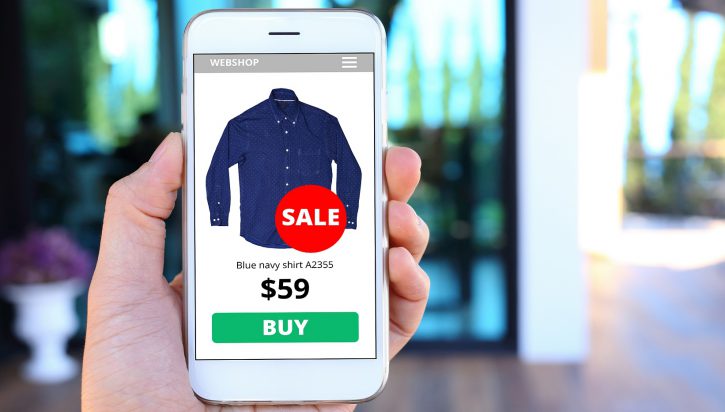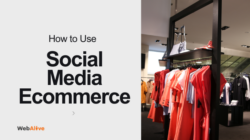
10 Effective Tips for Ecommerce Price Optimisation
Let’s talk about a common scenario.
You are browsing the products on an ecommerce site. You come across an item that you want to buy. The specifications and everything else seem perfect. So, you look at the price tag.
Unfortunately, it’s beyond your budget.
You feel disappointed. And start looking for similar products at a cheaper price elsewhere.
When purchasing online, 60% of shoppers report price to be the number one factor influencing their choice. If you are the owner of an ecommerce website, then the above scenario is something that you want to avoid.
It’s quite hard to come up with the right price for any product. You need to make a profit. But you don’t want to lose potential customers. In other words, you must optimise the price.
In this post, we will discuss how to optimize product prices.
What is Ecommerce price optimisation?
Ecommerce price optimisation is the process of using market and customer data to find the optimal price of goods in the best way possible that maximises the revenue and profit. And to find the optimal price, you need to understand how customers will react to price changes.
In ecommerce, price optimisation is necessary as in today’s world everything is constantly changing and evolving, from customers’ needs to taste to preferences to budget. That is why, alongside ensuring a custom ecommerce solution to make your store stand out, executing the necessary pricing adjustment becomes crucial to find the ideal amount to ask for. After all, it is the price of a product that regulates how likely customers are to purchase the product.
1. Avoid listing similar products with the same price
It is a scenario you will see on every e-commerce website you visit. There are two products with almost similar prices and according to research, most of the consumers will leave the website without buying anything.
The research was conducted for this scenario where two similar products were priced at $62 each. 64% of users left the store without buying any of them.
The same study was conducted with the same products with pricing of $62 and $64 respectively. Here, 77% of users made a buying decision in just no time.
What this study reveals is that it is not wise to keep prices the same as it will affect your sales negatively.
2. Apply the magic of 9
Visit any physical store or an online one and you will see pricing such as $29, $99, $199 and so on. Why do e-commerce marketers conduct such a practice of trusting the 9 factors?
You will not believe that it actually works tremendously as it is a psychological thing. You will not buy a product costing $200, but you will think about when the cost is $199.
Research by Quantitive Marketing & Economics, when you have two similar products, keep the price of one product relatively higher and ends with 9 and it will outsell the same product at a lower price.
There is a term in psychology called- the Left Digit Effect. When you see a price of $7.99, you actually think that the price is 7 and not 8.
2. Use accurate competitor data
A smart businessman always keeps their competitors closer, and sometimes it pays off well, too. If you are planning to design a dynamic and effective pricing strategy that actually works meaningfully, you need to go for competitor pricing analysis to come up with superior prices.
The best way is to collect as much raw data as possible and go for data cleansing. Use this data to define your pricing strategy.
3. Be dynamic. Don’t discriminate
It is not healthy for your business to discriminate prices for different mediums. It is a marketing tactic that the same product is at a higher price when a user visits the website from an Apple laptop.
It is not an ideal practice to offer different prices demographically or customer traits. It is simple discrimination and it might be considered illegal. Customers are becoming smart too, and they use a price comparison site to verify product prices. You simply don’t need it as it will take you nowhere.
Instead of it, research a lot and let your research outcomes decide the prices of the products.
4. Peak pricing
It is one of the best ways to earn revenues when you have a competitive edge. In seasons when demands are high, or your competitors have low stock, it is high time that you encash such opportunities. Most hotels and airline booking agencies follow a similar practice just to boost their revenues and profits.
5. Lose-leader strategy
It is also a proven pricing strategy that works every time. A lose-leader strategy is all about the psychological tendency of humans. It simply means when a person finds products below market value, they end up shopping more.
You can upsell, cross-sell and increase the total cart value by offering highly discounted prices. Overall, your profit margins will increase drastically.
Sometimes, you might not find good profits, but remember, client acquisition is also a valuable asset you have earned by implementing this strategy. Overall, it will work either way.
6. Cost-based pricing
In the cost-based pricing method, you can set selling prices of products focusing on the production cost. Here, the price of the product is determined by adding up all the costs involved in its production and distribution of it.
So, the price is set based on the profit you want to make but not on how much a customer is willing to pay. This will help you to achieve a specified profit margin over and above the whole cost of making and delivering the product or service.
7. Value (Consumer) Based pricing
Value-based pricing is another ecommerce pricing strategy usually based on a customer’s perceived value of a particular product or service. So, here, you can set the price of your products depending on how much your customers believe the products are worth.
If your company is offering new or limited-edition items that offer highly valuable features or services, you can take huge advantage of this value-based pricing model. With this customer-centric pricing, you can earn huge customer satisfaction by providing an unparalleled customer experience.
8. Bundle pricing
Bundle pricing is one of the ecommerce pricing strategies that allow you to sell combined products or services at a single price. Even if you are offering this at a reduced price, selling products in bundle pricing will increase your business revenue because, technically, customers are buying more products or services.
By bundling several products, you can attract more prospects, encourage customers to spend more money and reduce your marketing expenses.
9. Price skimming
The price skimming strategy is built upon a sense of urgency. Suppose when you display your exclusive items under phrases like exclusive offer, limited stock or limited edition. Your customers will be ready to pay a high price due to the fear of missing out.
So, you can charge the highest initial price and lower the price over time as the demand of the customers start reducing and competition enters the market.
10. Geographical pricing strategies
You can practice geographical pricing strategies to reflect several shipping costs, taxes or manufacturing expenses based on a customer’s geographical location. It can help your company expand into new geographical markets.
Using a geographical pricing strategy can let you lower your shipping, freight, or other transportation expenses while generating maximum profit within each region. But you must apply this strategy after evaluating the product demand in various regions and considering factors such as manufacturing cost, population density customer willingness and more.
How to choose a pricing strategy
Now that you are aware of several tactics of ecommerce price optimisation, you need to choose the right pricing strategy.
Conduct market research
Do some market research in order to find out what pricing strategy is best to choose. You can do this by asking your target market what they would pay for products and services like yours and figuring out what value you are bringing.
Determine the value of your product
Figure out what your customers actually value about your product. Evaluate your value metric by measuring the per-unit value of your products for sale and align it with your pricing strategy.
Determine a price range
Considering the cost of marketing, production and advertising, you can determine the maximum and minimum price you can charge for a product or service.
Look at your competitor’s pricing
Review your competitor’s pricing to see how their products and services are priced. Then, look at your profit margins to compare. Decide whether you want to beat your competitor’s prices by keeping your products at a lower price or pricing your products higher.
Conduct some experiments with pricing
There is no one-size-fits-all pricing model that you can go for when pricing your products. So, instead of gathering data on how your products will perform at different prices, you can introduce several pricing models to your audiences and figure out which price is favoured.
Conclusion
There are many ways you can come up with dynamic pricing strategies that work in your favour. All you need to do is to analyze and monitor every aspect of pricing and modify your strategies as per consumer patterns and behaviours.
You read a lot. We like that
Want to take your online business to the next level? Get the tips and insights that matter.

